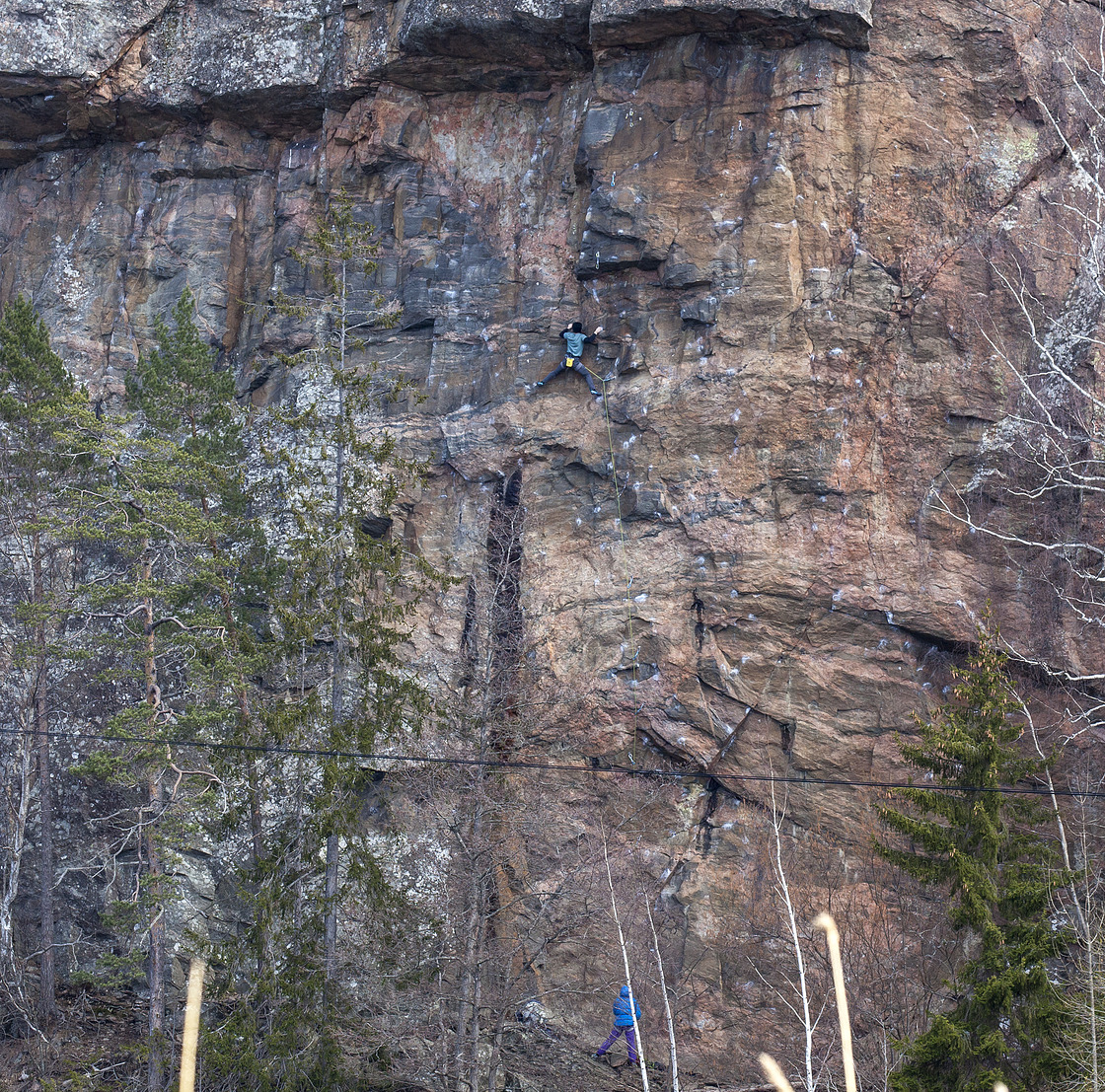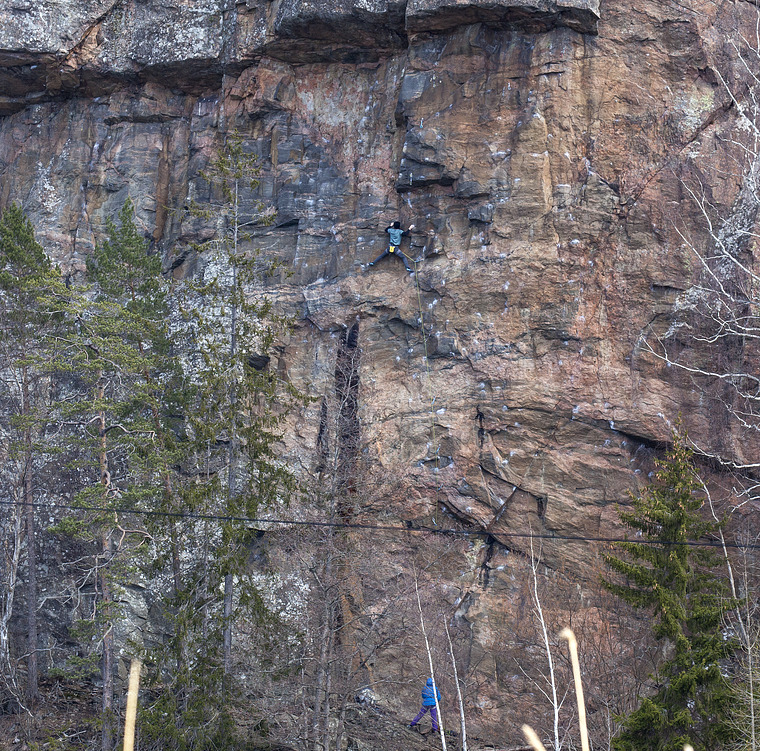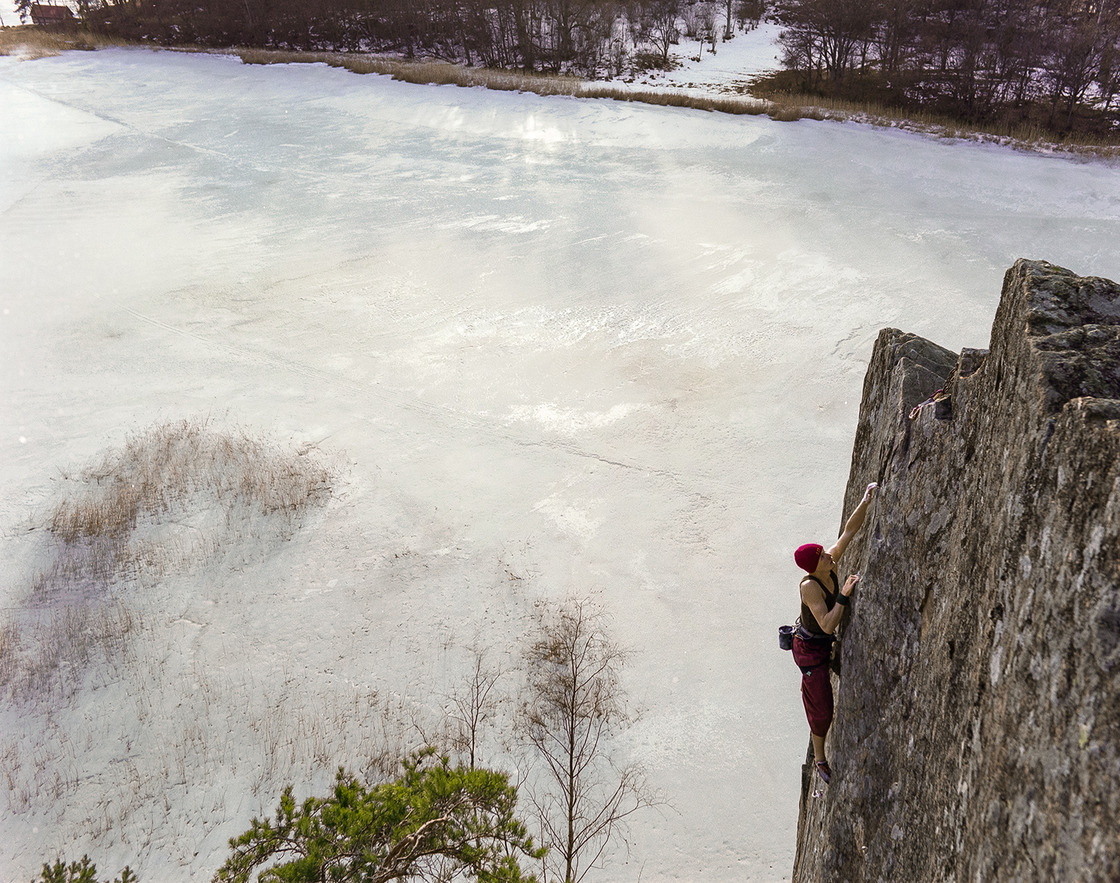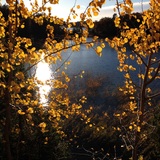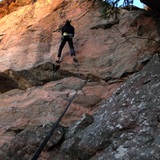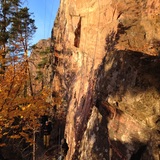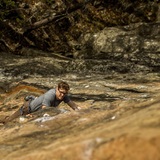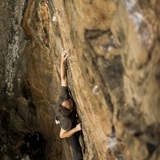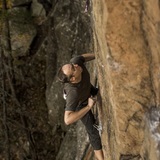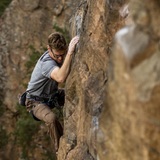Among the many other crags at Tyresö Dödskalleberget is the most magnificent, eye-catching and tempting crag with its big flat face and warm yellow colour. This crag offers technical face climbing on solid, beautiful and compact granite walls, among many considered as the best in its style in Stockholm. The wonderful cam location next to the sea makes this crag a perfect destination for weekends. The evening sun is glorious.
From the top you have an amazing view over the archipelago and at the far left base of the crag it is wonderful to hang out with a cup of coffee and let yourself be warmed up by the sun in springtime.
The main attraction is the slightly overhanging compact section on the right side of the Main Wall, which offers sustained delicate and technical face climbing on good crimps. The best grade span is between 7b-8a although there are two or three nice 6c as well. The moves are quite often a bit bouldery and strong fingers in combination with well-developed footwork are essential.
There are a few bolted routes in the lower grades (5a-6b) on the main wall as well but these are slabby, very compact and with many negative holds which makes a good foot technic even more important. The bolts can be a bit spread as well and if you are climbing near your limit it could make you nervous when climbing on these slabs.
On the left side of the Right Wall, there are some old bolted sport routes that are quite mossy (probably doable but really not recommendable until renovated). Further to the right, there are a couple of slabby mixed/trad routes on solid rock that are really fun if you can handle the sometimes sparse protection and the slabby moves. Bring a brush.
The Main Wall is southwest facing, open for the sun and gets very hot in summer. The sun strikes Main Wall at around twelve o'clock, but the climbs far to the left (where Mio are) catch the sun earlier. On calm days this is a popular crag in spring and autumn. Most of the routes dr quickly after rain but there can be some dripping on some routes (typical Diana, in spring).
